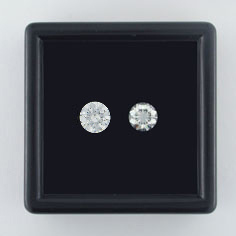Superidealist
Brilliant_Rock
- Joined
- Sep 10, 2003
- Messages
- 655
An easy way to compare the relative spread of diamonds of different wieghts is to calculate a number I call spread index. The spread index of a diamond is the diameter it would have if it were rescaled to weigh exactly one carat.
Spread Index = (average diameter)/(carat weight)^(1/3)
In ideal-cut diamonds the spread index should be very near 6.50. A smaller spread index indicates a less spready diamond, a larger spread index indicates a spreadier diamond. Keep in mind, however, that a larger spread index is not always better since a very large number may indicate a too-shallow cut.
The spread index can also be used with princess cut or modified square or octagonal cut diamonds.
It cannot be used to compare diamonds of different shapes.
Spread Index = (average diameter)/(carat weight)^(1/3)
In ideal-cut diamonds the spread index should be very near 6.50. A smaller spread index indicates a less spready diamond, a larger spread index indicates a spreadier diamond. Keep in mind, however, that a larger spread index is not always better since a very large number may indicate a too-shallow cut.
The spread index can also be used with princess cut or modified square or octagonal cut diamonds.
It cannot be used to compare diamonds of different shapes.















300x240.png)